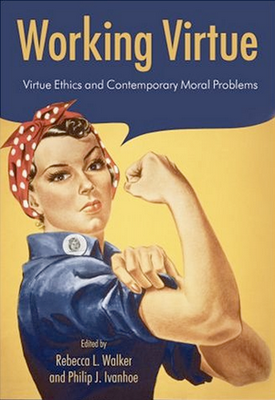Working Virtue: Virtue Ethics and Contemporary Moral Problems

Working Virtue: Virtue Ethics and Contemporary Moral Problems is a book outlining how virtues can be included in modern ethical analysis. There are multiple ways to apply virtue ethics, or, as the authors like to say, to put virtue ethics "to work." Illustrating the variations are thirteen different authors giving detailed accounts of virtue ethics at work inside schools, hospitals, courtrooms and boardrooms. The chapters test the theory as it relates to war, race, affluence, and the environment. Also important to note is the delineation they make between ethics for personal use and ethics for professionals working in specific fields.
Readers can digest the book in parts or as a whole. The former is ideal for a person interested in methodological instruction, say a doctor looking to include ethical reasoning in their daily encounters with patients. In fact there are several chapters that would prove enlightening if not instructional in the daily routines of heath caregivers. On the other hand, a person will benefit from the book as a whole if they are interested in the revival of virtue ethics as a growing body of theory. For someone with this kind of academic pursuit, Working Virtue offers a thorough and diverse overview of contemporary issues and their need to be understood from an ethical perspective. Nevertheless, this book is of relevant interest to anyone seeking a broader perspective on the universal plight of moral wrangling.
As a philosophical subset, morality is predominantly rooted in three theories. Virtue ethics is one, along with deontology (emphasis on duty and rules) and consequentialism (emphasis on utilitarianism). Generally speaking, the focus of virtue theory is on the human character: if you live with a consistent disposition to behave appropriately, and if your actions reflect this disposition, then you are generally living a good and moral life. The variety of this book's interdisciplinary approach does much to illustrate the difficulty in compartmentalizing these theories from one another, especially when trying to isolate their worldly applications.
Its utility is evident after the thirty-page introduction, in which the editors offer thoughtful analysis of each of the chapters within. They also spend time to qualify and explain the theory's major conflicts and historical predication. While it is unlikely that every topic will resonate to every reader, it is of great importance to see how each falls technically within virtue ethics. From the many authors that make up Working Virtue comes a wealth of knowledge that can help a generation of professional people who seek to be informed by ethical theory and guided by ethical principle.